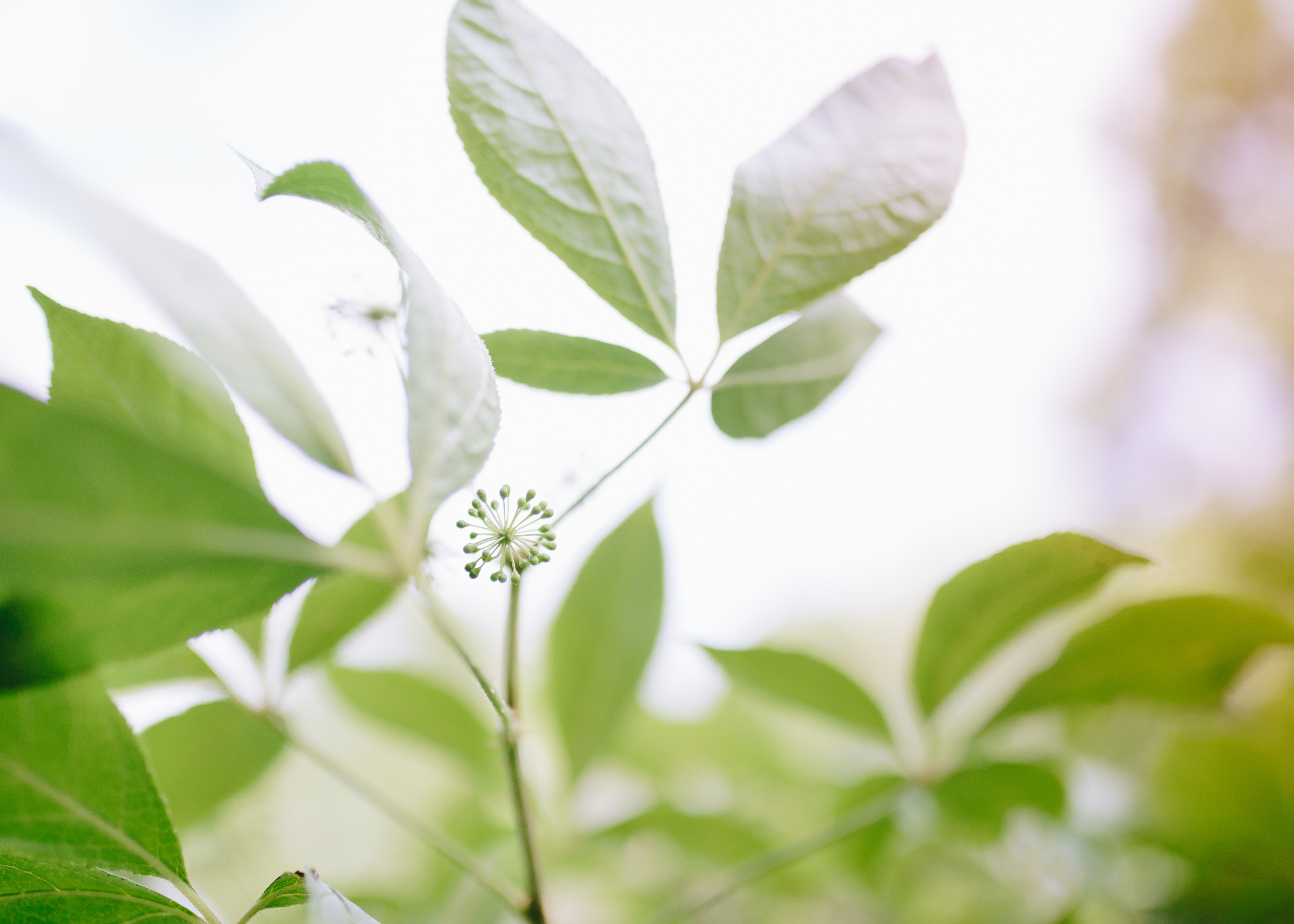Small spikenard (Aralia nudicaulis) grows on our northern forest floors. It is the first plant to signal that summer is coming to an end, even before the nights get cold or the leaves start to turn red. If we gaze towards the green forest carpet, we will notice yellow and brown spots on the leaves of the small spikenard, indicating that fall is upon us. Small spikenard will soon let its leaves fall to the ground and it will disappear from view. This is the time to gather our spade and basket to go dig for our treasure.
Small spikenard is a member of the Araliacaea family, like ginseng with which it shares many traits. It is tonic, adaptogen and anti-inflammatory. However, contrary to its Panax cousin, it grows quickly and if it is harvested with respect, colonies can replenish themselves easily. Small spikenard does things in threes: the first stem of spring divides into three petioles that each harbour one leaf divided into three lobes. A second stem carries three small clusters of flowers and fruits. Faithful to its threefold promise, it packs the punch of three plants.

We use small spikenard’s rhizome, a horizontal root that lengthens each year. The older the herb gets, the longer and stronger the rhizome, because it has had to defend itself against multiple aggressions in order to survive.
Small spikenard is an excellent adaptogen that acts gently and discretely. Its regular use helps us tolerate stress and nourishes our glandular system to help it adapt to stressful circumstances. It is a great tonic of the adrenal glands which are much solicited in times of stress. It has been shown that it contains anti-inflammatory constituents, which broaden the spectrum of its actions.
As a respiratory tonic, it helps expectorate mucus accumulated in the respiratory tract, thus relieving colds and cough and helping breathe easier.
Small spikenard is an indigenous herb which has long been used by First Nations peoples for cough, asthma, sore throat, toothache, digestive troubles and flatulence. Kids love to chew pieces of rhizome during a hike in the forest as it has a delicious taste of wild licorice!
Take a moment to go walk in the woods, to savour the cool weather and to discover small spikenard.

